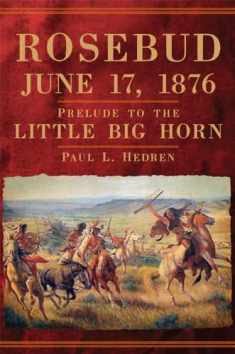
After Custer: Loss and Transformation in Sioux Country
ISBN-13:
9780806160443
ISBN-10:
0806160446
Edition:
First Edition
Author:
Paul L. Hedren
Publication date:
2018
Publisher:
University of Oklahoma Press
Format:
Paperback
276 pages
Category:
Native American
,
Americas History
FREE US shipping
Book details
ISBN-13:
9780806160443
ISBN-10:
0806160446
Edition:
First Edition
Author:
Paul L. Hedren
Publication date:
2018
Publisher:
University of Oklahoma Press
Format:
Paperback
276 pages
Category:
Native American
,
Americas History
Summary
After Custer: Loss and Transformation in Sioux Country (ISBN-13: 9780806160443 and ISBN-10: 0806160446), written by authors
Paul L. Hedren, was published by University of Oklahoma Press in 2018.
With an overall rating of 4.0 stars, it's a notable title among other
Native American
(Americas History) books. You can easily purchase or rent After Custer: Loss and Transformation in Sioux Country (Paperback) from BooksRun,
along with many other new and used
Native American
books
and textbooks.
And, if you're looking to sell your copy, our current buyback offer is $0.66.
Description
Between 1876 and 1877, the U.S. Army battled Lakota Sioux and Northern Cheyenne Indians in a series of vicious conflicts known today as the Great Sioux War. After the defeat of Custer at the Little Big Horn in June 1876, the army responded to its stunning loss by pouring fresh troops and resources into the war effort. In the end, the U.S. Army prevailed, but at a significant cost. In this unique contribution to American western history, Paul L. Hedren examines the war’s effects on the culture, environment, and geography of the northern Great Plains, their Native inhabitants, and the Anglo-American invaders.As Hedren explains, U.S. military control of the northern plains following the Great Sioux War permitted the Northern Pacific Railroad to extend westward from the Missouri River. The new transcontinental line brought hide hunters who targeted the great northern buffalo herds and ultimately destroyed them. A de-buffaloed prairie lured cattlemen, who in turn spawned their own culture. Through forced surrender of their lands and lifeways, Lakotas and Northern Cheyennes now experienced even more stress and calamity than they had endured during the war itself. The victors, meanwhile, faced a different set of challenges, among them providing security for the railroad crews, hide hunters, and cattlemen.Hedren is the first scholar to examine the events of 1876–77 and their aftermath as a whole, taking into account relationships among military leaders, the building of forts, and the army’s efforts to memorialize the war and its victims. Woven into his narrative are the voices of those who witnessed such events as the burial of Custer, the laying of railroad track, or the sudden surround of a buffalo herd. Their personal testimonies lend both vibrancy and pathos to this story of irreversible change in Sioux Country.


We would LOVE it if you could help us and other readers by reviewing the book
Book review

Congratulations! We have received your book review.
{user}
{createdAt}
by {truncated_author}




